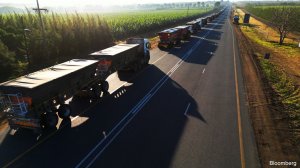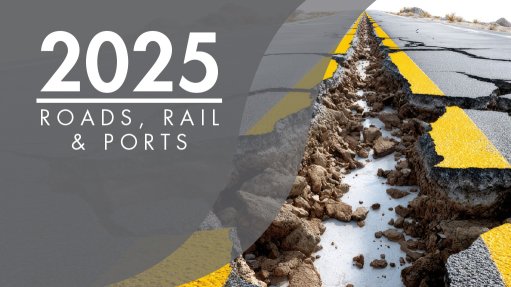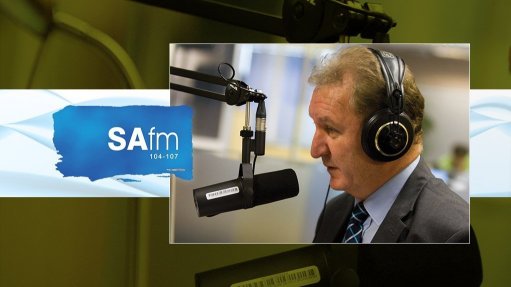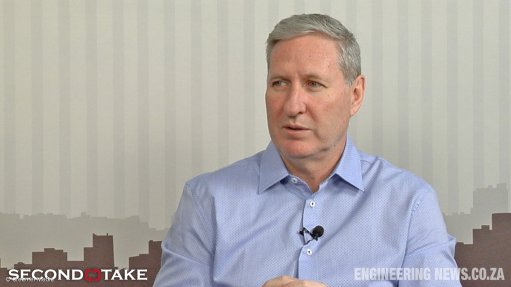Pulse report shows marked improvement in major road corridors
The newly launched National Logistics Crisis Committee (NLCC) 'Pulse' report has so far shown a general year-on-year improvement in terms of the movement of heavy motor vehicles (HMVs) along the eight monitored corridors, data analytics firm Crickmay & Associates MD Jayce Lane said on August 8.
Speaking during the online launch of the report, he said the purpose of this instrument was to create a better understanding for users of how the logistics network is affected.
"Supply chain corridors’ competitiveness is impacted by how well they operate, and we all impact each other," Lane stated. "What we're trying to do is get to one single version of the truth and that it's fact-based understanding. We're not wanting to work on hearsay, but we're trying to actually establish data, which is a great basis for work going forward."
The Pulse report considers eight major transport corridors: the N1 corridor between Cape Town and Beitbridge, the N2 corridor between Ermelo and Richards Bay, the N3 corridor between Durban and Johannesburg, the N4 corridor between Pretoria and Maputo, the N8 corridor between Bloemfontein and Nakop, and the corridors between Kuruman and Saldanha, Kuruman and Gqeberha, and Walvis Bay and Cape Town.
The report examines the average speed and duration to traverse a corridor, as well as the incidence of disruptive occurrences such as accidents.
The report also monitors the complexity of border crossings and measures the time it takes to process travellers. Similarly, it assesses the amount of time that heavy motor vehicles tend to spend at port, along with vehicle bypasses, both of which are indicators of port congestion.
The Pulse report relies on the collection of data from about 80-million anonymised HMV records a day, with about 150 000 records a week of all vessels moving in and out of South Africa's ports.
Lane explained that the new Pulse report is a PDF report that will be distributed to stakeholders who request it on a weekly basis on Tuesday afternoons, taking into consideration all activities from the previous Monday to Sunday.
"We're looking at what's the congestion like with respect to any motor vehicles in South African supply chains. We're trying to understand what our performance has been over the last 14 days with respect to any one corridor and the vehicle movements there, how does that compare to our year-to-date average for 2024 and how does this look compared to 2023,” Lane said.
The N1 corridor has shown the greatest improvement out of the eight monitored. In 2023, during the same week, the N1 corridor averaged 64 hours, compared to only 33.7 hours in 2024. The Walvis Bay to Cape Town corridor also showed marked improvement, dropping from 43.5 hours in 2023 to 30.2 hours in 2024. All the other corridors showed smaller positive improvements, except for the corridor from Kuruman to Gqeberha, which worsened from 25.4 hours in 2023 to 28.8 hours this year.
The report also shows border queue lengths, with the queue at the Lebombo/Ressano Garcia Border post being by far the longest in the past week at 13 km. Martins Drift and Beitbridge each had queues of about 1 km, with the rest being less than 1 km each.
In terms of port waiting times, Richards Bay averaged nine hours for the past week, with Saldanha coming in next at about 6.3 hours.
Lane noted that, when looking at the average for the last 14 days, it was possible to see which ports had improved and which had worsened.
"We can see that, apart from the ports of East London and Gqeberha, all the other ports have seen a reduction in times over the last period in terms of this week versus the previous week," he said.
Private sector volunteer organisation Business for South Africa CEO Gerhard Marais emphasised the importance of centralised information.
"To have choices, you need to have information. And to have information, it needs to be centralised and available for you to make decisions," he said, noting that the main objective of the Pulse report was to support stakeholders in the South Africa logistics space, from business owners to policy makers, so that South Africa’s crucial corridors could be improved.
"The very first objective of the Pulse report is to put all the data together, share it, and from there on, they can be analytics. We need to look at how we can have the incident-reporting be better and how you can use it to your benefit in your businesses. Simultaneously, that will help us make the corridors flow better, which has a direct impact upon the cost of doing business in South Africa,” he said.
Lane explained that the NLCC Pulse report was built on the back of a Web-based logistics monitoring system, which also comprised a mobile application and a WhatsApp channel.
He said the more this platform was embraced by road users, the more accurate the data would become.
“We encourage people to use it and submit data, because by submitting more data, the platform becomes richer with information, and people are able to derive more insights,” Lane said.
Article Enquiry
Email Article
Save Article
Feedback
To advertise email advertising@creamermedia.co.za or click here
Comments
Press Office
Announcements
What's On
Subscribe to improve your user experience...
Option 1 (equivalent of R125 a month):
Receive a weekly copy of Creamer Media's Engineering News & Mining Weekly magazine
(print copy for those in South Africa and e-magazine for those outside of South Africa)
Receive daily email newsletters
Access to full search results
Access archive of magazine back copies
Access to Projects in Progress
Access to ONE Research Report of your choice in PDF format
Option 2 (equivalent of R375 a month):
All benefits from Option 1
PLUS
Access to Creamer Media's Research Channel Africa for ALL Research Reports, in PDF format, on various industrial and mining sectors
including Electricity; Water; Energy Transition; Hydrogen; Roads, Rail and Ports; Coal; Gold; Platinum; Battery Metals; etc.
Already a subscriber?
Forgotten your password?
Receive weekly copy of Creamer Media's Engineering News & Mining Weekly magazine (print copy for those in South Africa and e-magazine for those outside of South Africa)
➕
Recieve daily email newsletters
➕
Access to full search results
➕
Access archive of magazine back copies
➕
Access to Projects in Progress
➕
Access to ONE Research Report of your choice in PDF format
RESEARCH CHANNEL AFRICA
R4500 (equivalent of R375 a month)
SUBSCRIBEAll benefits from Option 1
➕
Access to Creamer Media's Research Channel Africa for ALL Research Reports on various industrial and mining sectors, in PDF format, including on:
Electricity
➕
Water
➕
Energy Transition
➕
Hydrogen
➕
Roads, Rail and Ports
➕
Coal
➕
Gold
➕
Platinum
➕
Battery Metals
➕
etc.
Receive all benefits from Option 1 or Option 2 delivered to numerous people at your company
➕
Multiple User names and Passwords for simultaneous log-ins
➕
Intranet integration access to all in your organisation



















